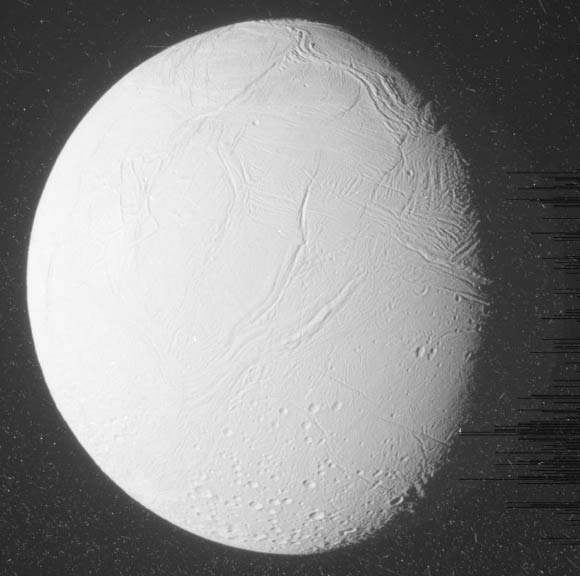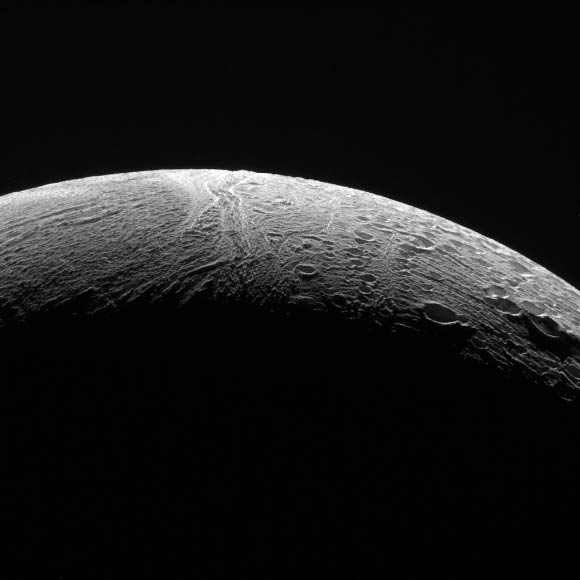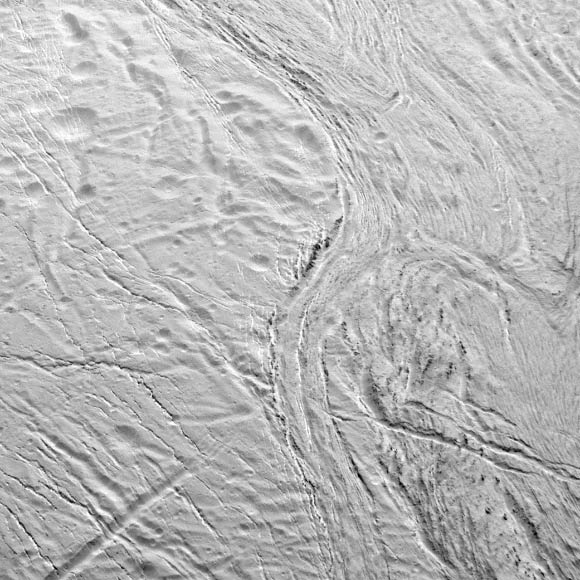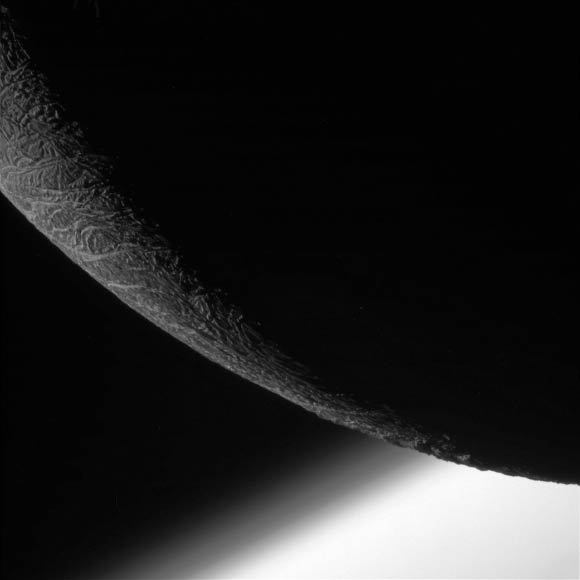NASA’s Cassini robotic orbiter made a close flyby of Enceladus on December 19, the last targeted Enceladus encounter of the mission.

This unprocessed image was taken during Cassini’s close approach to Enceladus on December 19, 2015, and received on Earth day later. Image credit: NASA / JPL-Caltech / Space Science Institute.
“This final Enceladus flyby elicits feelings of both sadness and triumph. While we’re sad to have the close flybys behind us, we’ve placed the capstone on an incredible decade of investigating one of the most intriguing bodies in the Solar System,” said Cassini team member Dr Earl Maize, of NASA’s Jet Propulsion Laboratory.
The spacecraft passed Enceladus – the sixth-largest of Saturn’s moons – at a distance of 3,106 miles (4,999 km) on December 19, 2015, at 12:49 p.m. EST (9:49 a.m. PST, 5:49 p.m. GMT). This was the 22nd targeted Enceladus flyby of the Cassini mission.

Cassini peered out over Enceladus’ northern territory, capturing this view of two different terrain types. A region of older terrain covered in craters that have been modified by geological processes is seen at right, while at left is a province of relatively craterless, and presumably more youthful, wrinkled terrain. At the time of this image, the spacecraft was roughly 21,000 miles (34,000 km) from Enceladus. Image credit: NASA / JPL-Caltech / Space Science Institute.
“We bid a poignant goodbye to our close views of this amazing icy world,” said mission’s project scientist Dr Linda Spilker, also of NASA’s Jet Propulsion Laboratory.
“Cassini has made so many breathtaking discoveries about Enceladus, yet so much more remains to be done to answer that pivotal question: does this tiny ocean world harbor life?”

On December 19, 2015, Cassini captured this view featuring the nearly parallel furrows and ridges of the feature named Samarkand Sulci. The image was taken with the narrow-angle camera onboard Cassini. The view was acquired at a distance of 8,000 miles (12,000 km) from Enceladus. Image credit: NASA / JPL-Caltech / Space Science Institute.
“By the time the mission concludes on 2017, Cassini will have obtained observations over six years of winter darkness in the moon’s southern hemisphere. These are ideal conditions for improving measurements of heat flow from the interior to the surface,” NASA scientists said.
“Understanding heat flow is important because it provides key information on what is driving Enceladus’ geysers.”

This image from Cassini shows Enceladus’ craggy, dimly lit limb, with the planet Saturn beyond. Layers can be seen in the high hazes of Saturn’s upper atmosphere, in the gradient that separates the gas giant from space. At the time of this image, the orbiter was 15,000 miles (24,000 km) from Enceladus. Image credit: NASA / JPL-Caltech / Space Science Institute.
Cassini will continue to monitor activity on this Saturnian moon from a distance, through the end of its mission in 2017. Future encounters will be much farther away – at closest, more than 4 times farther than this flyby.







